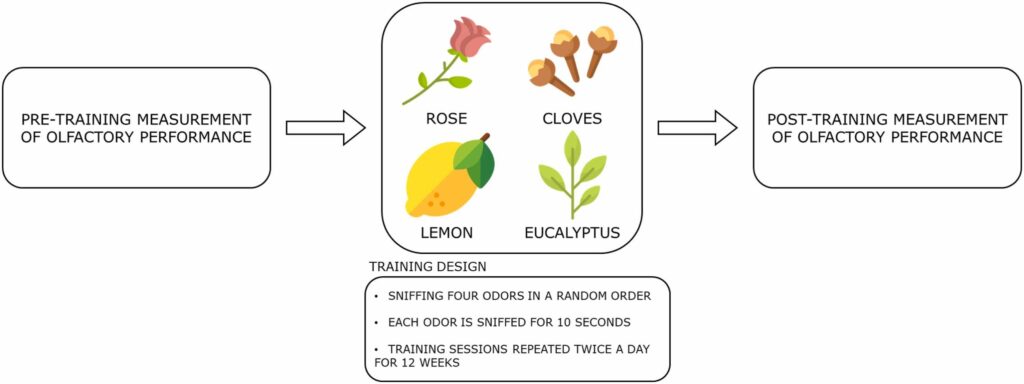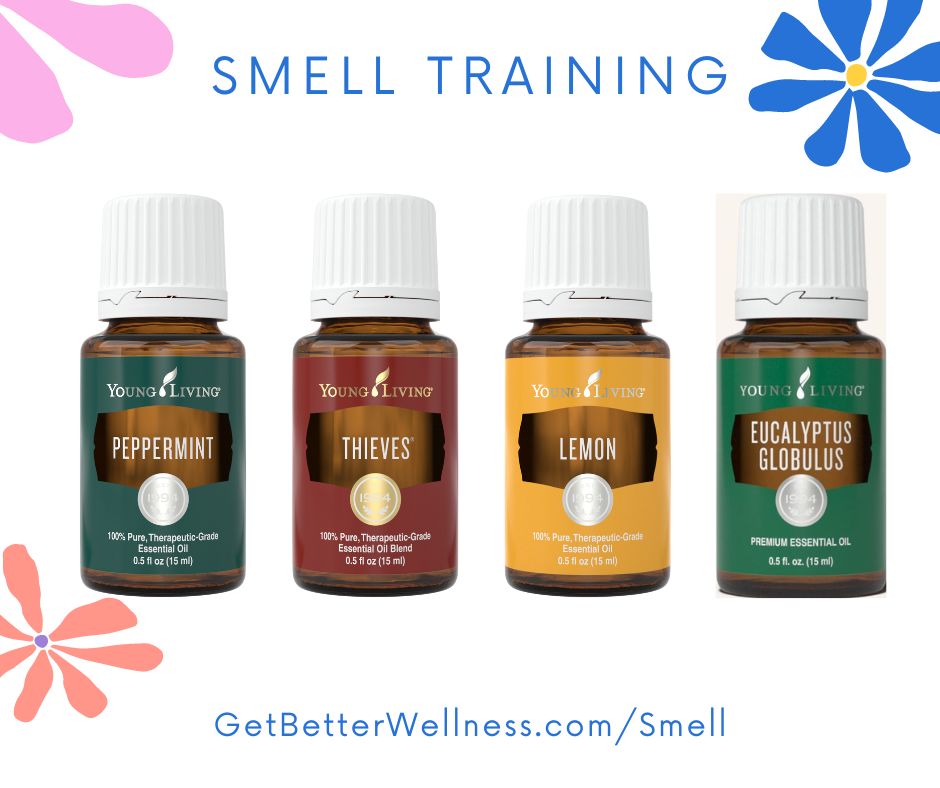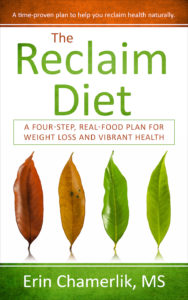
How to get your sense of smell back – Olfactory Training
The loss of the sense of smell (anosmia) or taste (ageusia) is one of the common symptoms of COVID-19. It was reported that 40-50% of people with COVID-19 reported these symptoms [source]. There can be a reduction or absence of these senses or a distortion resulting hallucinations (phantosmia) or putrid sensations. The good news is that most of those who lose their sense of smell recover [source]. Long-term deficits occur in up to 30% of COVID-19 cases, although total anosmia is relatively rare [source].
The original procedure of the olfactory training proposed in a 2009 study
Hummel et al. 2009. This is the first study conducted among patients with post-infectious, post-traumatic, or idiopathic olfactory loss. Hummel and collaborators presented a novel, non-pharmacological method of rehabilitation of the sense of smell – olfactory training (OT). The original training included systematic exposure to four selected odorants.
The researchers used key constituents found in four plants: rose (phenyl ethyl alcohol), eucalyptus (eucalyptol), lemon (citronellal) and cloves (eugenol). Patients sniffed the scents one at a time, for 10 seconds, twice a day, for a period of 12 weeks

Fig. 1. The original procedure of the olfactory training proposed by Hummel et al. (2009). Patients with post-infectious, post-traumatic, and idiopathic olfactory loss benefited from the training and 28% of them showed clinically significant improvement (as compared with spontaneous recovery in 6% of patients who did not undergo OT).
How Essential Oils Can Help Retrain Your Sense of Smell
I recommend only using potent, pure essential oils that have not been distilled using harsh chemicals—for me, I only us Young Living essential oils. We know that these essential oils are going to instantly reach the olfactory bulb with the beneficial constituents that the body needs.
The protocol to train your sense of smell follows that outline in the 2009 study above and uses four essential oils, sniffed separately for 10 seconds each twice a day. While sniffing the aroma concentrate on what you are smelling and try to imagine the smell at the same time.
Smell Training Simplified

Choose your four oils, one from each of the four categories resinous, citrus, floral, and spicy. If you are new to the oils I recommend starting with Eucalyptus, Lavender, Lemon and Thieves blend (a spicy aroma that includes cinnamon and clove).
- Get the 4 oils (Eucalyptus, Lavender, Lemon, Thieves). Get the oils here, save 24% off retail.
- Get 4 cotton balls.
- Apply 2-3 drops of each oil on each cotton ball.
- Smell the first oil deeply through your nose for 10 seconds. Try to imagine what you are smelling.
- Take a 10 second break. Repeat the procedure taking a 10 second break between each oil.
- Be patient and consistent with daily smell training. It can take weeks or months but most people who lose their sense of smell recover.
- Do not vary the procedure or the oils. Use this method twice a day and always with the same four oils.
Extra Smell Helpers
- Put a drop of Peppermint essential oil on your thumb and stick your thumb to the roof of your mouth and hold it there for about 20 seconds. Repeat three times a day.
- Add supplements that support cellular and nerve health, reduce inflammation and support overall immune health and olfaction. These supplements include zinc (as a multi-mineral complex that includes copper), Vitamin C, Vitamin D3/K2, and B12.
- Herbs can help! Place two drops of castor oil in each nostril at bedtime. Make and drink power teas by steeping fresh chopped garlic cloves or fresh ginger in hot water and consume.
- Take a tablespoon of raw apple cider vinegar in a glass of warm water and add a teaspoon of raw honey. Drink this infusion twice a day.
You Can Heal
Your body wants to heal! Support your body’s efforts by eating an anti-inflammatory diet (see my book, the Reclaim Diet) and drinking plenty of clean water.
Recommended
-
Dandelion for Liver Support and Health BenefitsJuly 20th, 2024
-
Modified Citrus PectinJuly 11th, 2024
-
Bentonite Clay Mask for Face and ArmpitsJuly 8th, 2024
-
Two Supplements for Erectile DysfunctionJune 30th, 2024








